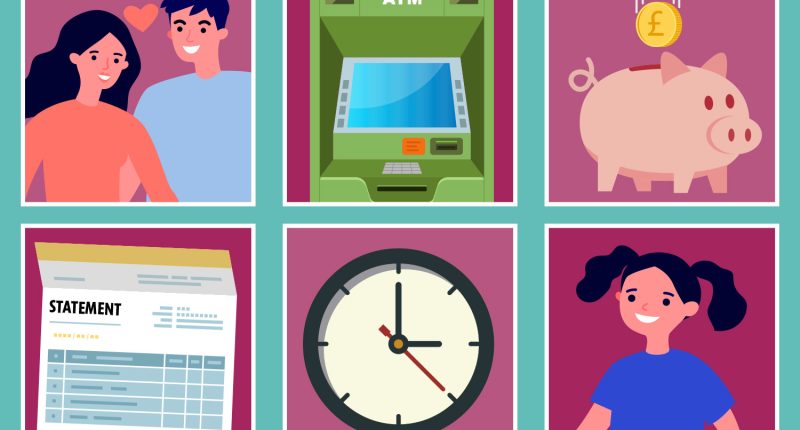THERE are several traps and mistakes you need to avoid ahead of a “confusing” savings deadline coming up.
The end of the tax year means there are a number of things workers, couples and parents need to check to make the most of their cash.
But savers also need to have their wits about them too, according to experts at Bestinvest.
This is because the tax deadline means there are just weeks left to use up their ISA (individual savings account) allowances before they reset again.
Alice Haine, personal finance analyst at Bestinvest, told The Sun: “ISA rules are changing but it’s important to remember that they haven’t changed yet so the existing regulations still apply to ISA saving this tax year, which ends at midnight on April 5.”
An ISA is a type of savings account where you can save up to £20,000 each year tax-free – and some of them even offer free cash top-ups too.
READ MORE IN MONEY
Several ISA reforms have been announced by the government in recent months.
Changes include allowing savers to subscribe to multiple ISAs of the same type and allowing partial ISA transfers.
These rules will come into force at the start of the next tax year on April 6.
Meanwhile, the new British ISA, unveiled at the Spring Budget, gives savers an additional £5,000 allowance to invest in UK shares – a 25% uplift on the current ISA allowance.
Most read in Money
Although this won’t be implemented for a while.
Alice added: “With changes to ISA rules announced by Chancellor Jeremy Hunt at the Autumn Statement last year and then an additional £5,000 British ISA unveiled at the Spring Budget, it’s understandable that some savers and investors will feel confused.
“To avoid making a mistake, savers and investors must remember they have just under four weeks to take advantage of this tax year’s £20,000 tax-free ISA allowance before it resets and must stick to the existing ISA rules to ensure they don’t lose out.”
Taking advantage of the current £20,000 ISA allowance for the 2023-24 tax year before it resets on April 6 is “imperative” for those who want to protect their savings and investments from tax.
Interest on savings outside of an ISA, or over the annual allowance, can be taxable.
With so many ISA changes in the pipeline but no changes this tax year, Alice has revealed the nine common ISA mistakes to avoid in the run-up to the tax-year-end deadline.
1. Ignoring the £20,000 ISA allowance
“The biggest mistake anyone can make is not taking advantage of this tax-free allowance at all – even if they can only use a portion of it,” Alice said.
Of course not everyone has spare cash to fill up an ISA but ignoring the allowance completely isn’t a good idea, she said.
An ISA allows people to grow their savings without being taxed on the interest they earn in a cash ISA, or returns from invesxtments in a stocks and shares ISA.
Alice said: “Another major consideration is the Personal Savings Allowance (PSA), which enables savers to earn a set amount of interest before tax charges apply.”
Under the allowance, basic-rate taxpayers (those with a yearly income between £12,571 and £50,270) can earn £1,000a year in savings income before having to pay tax on it.
Meanwhile, higher-rate taxpayers (those earning between £50,271 to £125,140 a year) have a £500 annual allowance.
Since rates on savings accounts have shot up recently, it means more people are being drawn in to paying tax on savings interest for the first time in years.
For instance average cash ISA rates are now 3.36% compared to 2.01% last year, and easy access are 3.16% versus 1.85% in March 2023.
Recent research from Paragon Bank shows the number of adult savings accounts with balances large enough to incur tax on savings interest has tripled in the past year from 5.5million accounts in November 2023, compared to 1.6million a year earlier.
Alice said: “ISAs are a ‘use it or lose it’ allowance that cannot be backdated, so moving money into a tax-free ISA protects money, which is why anyone not taking advantage of the perks that come with this account is missing out.”
How you can find the best savings rates
If you are trying to find the best savings rate there are websites you can use that can show you the best rates available.
Doing some research on websites such as MoneyFacts and price comparison sites including Compare the Market and Go Compare will quickly show you what’s out there.
These websites let you tailor your searches to an account type that suits you.
There are three types of savings accounts fixed, easy access, and regular saver.
A fixed-rate savings account offers some of the highest interest rates but comes at the cost of being unable to withdraw your cash within the agreed term.
This means that your money is locked in, so even if interest rates increase you are unable to move your money and switch to a better account.
Some providers give the option to withdraw but it comes with a hefty fee.
An easy-access account does what it says on the tin and usually allow unlimited cash withdrawals.
These accounts do tend to come with lower returns but are a good option if you want the freedom to move your money without being charged a penalty fee.
Lastly is a regular saver account, these accounts generate decent returns but only on the basis that you pay a set amount in each month.
2. Not maximising the £20,000 ISA allowance in full
If you are lucky enough to have sufficient funds, not maximising the allowance in full may lead to regret later on.
This is because once the money is stored in an ISA, the tax protection applies year after year.
Alice stated: “So, savers that have any of their allowance left over this year would be foolish not to use it up if they have the means to do so.
“Whether making fresh contributions or transferring assets held outside a tax wrapper into an ISA, failing to take advantage of this tax allowance in full is equivalent to leaving your money under the mattress and not letting it toil away and earn interest for you.”
Being as tax-efficient as possible is one of the best ways to “turbocharge” the returns you receive, so if you can afford it definitely make sure you use the maximum allowance before April 5.
3. Paying into two ISAs of the same type
From April 6, the rules are changing to allow savers to subscribe to multiple ISAs of the same type – barring the Lifetime ISA (LISA) – within the same tax year.
There are currently four different types of ISAs available in the UK.
A cash ISA offers tax-free interest on your money, there are two types – easy access and fixed rate.
Stocks and shares ISAs allow you to invest in funds, bonds, and shares in individual companies.
Lifetime ISA (LISA) allows you to save up to £4,000 a year, towards either a first home costing up to £450,000 or for retirement.
An innovative finance ISA (IfISA) is an ISA that contains peer-to-peer loans instead of cash ISA or stocks and shares ISA.
A Help to Buy ISAs are no longer open but if you already have one they let you save up to £200 a month towards your first home, with the state adding a 25% bonus (max £3,000) on top of what you save.
Peer-to-peer lending matches up investors with borrowers, who could be individuals, businesses, or property developers.
This will be handy for investors who want to use more than one provider or have different ISAs for different financial goals.
But, importantly, the rules haven’t changed yet.
So for now savers can still only contribute to one ISA of each type this tax year.
This means adults can contribute to one of each type of the following:
- cash ISA
- stocks & shares ISA
- Lifetime ISA
- Innovative ISA
- Help to Buy ISA
Alice said: “This can be tricky to keep track of, which is why it is such a common mistake savers make.
“A saver might forget they have a regular payment going into one stocks and shares ISA and then mistakenly make a lump sum payment into another.”
If you think you’ve breached the rules, call HMRC on 0300 200 3300.
HMRC may then tax you on the cash you wrongly added or the ISA manager may refund the money.
“However, if you instantly realise you have broken a rule, simply withdraw the money and keep a record of the transactions in case HMRC gets in touch in the future,” Alice said.
4. Exceeding the £20,000 subscription limit
Another common error according to Alice, is paying too much into your ISA accounts and exceeding the maximum limit.
The current annual limit of £20,000 has remained the same since April 2017.
A LISA however is slightly different because you can only contribute £4,000 – although bear in mind this still counts towards the £20,000 maximum.
Meanwhile, the Help to Buy ISA has a cap of £200 per month, which also counts towards the £20,000 limit.
A Junior ISA, or JISA is a good way for parents to lay the foundations for their child’s financial future by allowing them to build up long-term, tax-free savings, Alice said. They have an annual limit of £9,000.
It’s important to remember though that any money deposited in a JISA is locked away until the child turns 18, so if a parent needs that money for other expenses for their child, they’ll need to source the funds elsewhere.
Alice pointed out: “When you consider the different allowance caps, the fact they are all shared under one headline limit of £20,000 and the likelihood different ISAs are likely to be held with different providers, it’s easy to understand how some people can accidentally contribute too much.”
If you breach the limit, again call HMRC’s ISA helpline and they’ll assess how to rectify the problem.
5. Choosing the wrong type of ISA for your savings
People often choose the wrong type of ISA for their saving goal, according to Alice.
She said: “ISAs have complicated rules and different advantages depending on which one you choose.
“Selecting the right type of ISA for each of your financial goals is important.”
For example, cash ISAs make sense for those who want to access their money for short-term goals within the next five years.
Such as if you’re redoing your kitchen or if you have a wedding planned.
But they’re not so great if they want to receive higher returns to pay for your child’s education or retirement – something a stocks and shares ISA is more likely to do for you.
This is because they offer the possibility of better returns in the long run compared to saving in cash.
Separately, a LISA works well for younger savers looking to buy their first home or to top up retirement savings, with a government bonus of up to £1,000 a year on the maximum annual contribution of £4,000.
But the rules are complicated and there is a 25% penalty if people want to access their money early.
Alice said: “As an example, someone contributing £4,000 would have a total pot of £5,000 once the government top-up of £1,000 is applied.
“If you later decide to take out that £5,000, you will pay 25% of the full amount, so £1,250, which detracts from any bonus you receive.”
It’s important you do your research before you choose where to stick your money.
6. Cashing in an ISA rather than transferring it
“Savers often move their ISA to another provider, for example to take advantage of lower fees or better rates ” Alice said.
When moving an ISA to another provider, she says it’s “vital” that you transfer it as opposed to closing the account, withdrawing the money and then paying the funds into a new ISA.
If you choose the second option you’ll use up your annual allowance unnecessarily as the action of closing the account and paying the cash into a new ISA as a fresh contribution, and meaning it loses its tax-free status.
When does the tax year start and end?
Tax years run differently to the standard January to December year
Instead it runs mid-year from April to April.
Many other countries around the world have tax years that run with the calendar year.
In Ireland, the US, France and Germany for example, it starts on January 1 and ends on December 31.
But in the UK for historical reasons, our tax year starts and finishes mid-way through.
The 2023-2024 tax year starts on April 6, 2023 and end on April 5, 2024.
The 2024-2025 tax year runs from April 6, 2024 to April 5, 2025.
Alice said: “Any new contribution into another ISA counts towards the annual £20,000 allowance for that tax year whereas initiating a simple transfer does not.
“This is less of an issue for those with smaller ISA pots, as they are unlikely to use their allowance in full anyhow.”
The money expert said it can be a “headache” for people with larger ISA holdings.
This is because making the wrong move could see them lose the tax-free status on a very large chunk of money, making them liable for unnecessary tax charges.
7. Worrying that money added to a stocks and shares ISA must be invested immediately
Savers maximising their allowance in an investment ISA often wrongly assume they must invest the money the moment the funds are added, Alice said.
Instead, they simply need to add the money in cash to beat the deadline, and then take their time to make their investment choice.
She said: “If someone is opening an ISA in the dying seconds of the tax year, it will undoubtedly be the wrong time to develop a considered investment strategy aligned to their financial goals.
“Provided the cash is loaded into the ISA before tax year end it is considered part of the current tax year’s allowance. They can then make investment decisions on their own timeline – even if that happens in the next tax year.”
So make sure you don’t rush the investment but if you’re thinking about opening one it could be a good idea to do so before April 5.
8. Not taking advantage of your spouse’s or child’s ISA allowance
The financial whizz also warned that it’s not just your £20,000 ISA allowance that needs to be used up by the end of the tax year.
She said: “Your spouse or civil partner also has a £20,000 tax-free ISA allowance and your children each have a Junior ISA allowance of £9,000.
“A family of four can potentially stash up to £58,000 a year free of tax on income and capital gains so taking full advantage, for those that can afford to, is imperative.”
Also, married couples and civil partners, unlike their unmarried peers, have a unique ability to make interspousal transfers without being charged tax.
Alice explained: “So, if one partner has utilised their ISA allowance in full, they could transfer assets to their spouse to take advantage of theirs – just remember their other half then becomes the legal owner of those assets so this should only be initiated by those in a strong relationship.”
Similarly, children have a Junior ISA (JISA) allowance of £9,000 so you should also take advantage of that if you can.
She added: “When you consider all the financial challenges your children are likely to face, from university costs to high house prices and more, helping them build a nest egg now will be invaluable.”
How do you switch ISA provider?
IF you’re in the market for a new, better paying ISA, there’s one thing you shouldn’t do.
Never withdraw money from your Isa account to put it into your new one – if you do it’ll lose its tax-free benefits.
Instead, you need to follow the simple transfer process.
Make sure that the new account you want to use accepts transfers (not all do) and then fill in the Isa transfer form with the new provider.
It will arrange for your savings to be transferred over, with the process taking no more than 15 working days.
And remember, you can only have one “active” Cash ISA per tax year.
9. Leaving it too late
Finally, Alice said: “The most important feature of an ISA to remember is its ‘use it or lose it’ status.
“You cannot carry the ISA allowance onto the next year so those that want to max out their account must complete any transactions by midnight on April 5. “
A lot of savers leave it to the last minute and Alice said she’s even seen clients making their final contribution at 11.55pm on April 5.
Such a last-minute approach is risky and could lead to mistakes.
Alice warned: “A power cut in a storm, a technical glitch or an online provider that needs time to process your application or add the funds could cause a saver to miss out on valuable tax-free benefits.
READ MORE SUN STORIES
“Importantly, midnight is the point when your application process needs to have been completed, not begun.”
So it’s not a good idea to leave it till the last minute, give yourself some time before the deadline hits.
Do you have a money problem that needs sorting? Get in touch by emailing [email protected].
Plus, you can join our Sun Money Chats and Tips Facebook group to share your tips and stories.










